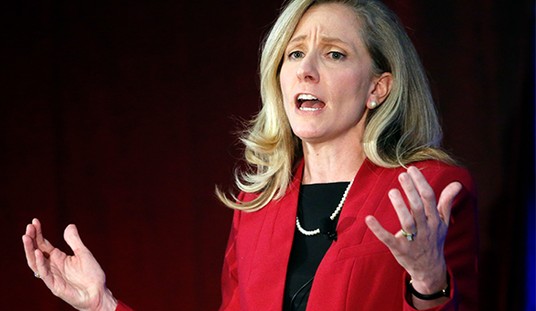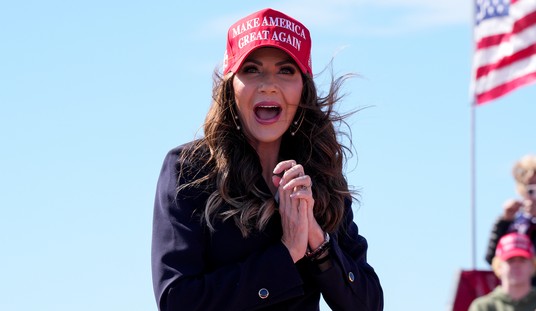The police chief of Ferguson, Missouri, appealed for calm Wednesday after three nights of unrest over the police killing of an unarmed black teenager.
“We’re just asking that the protests be peaceful,” Chief Thomas Jackson told reporters. “We understand the anger, we understand that people want answers, and we understand that we’ve got a problem. But we’re just asking people to be peaceful.”…
At a separate news conference, St. Louis County Prosecuting Attorney Robert P. McCulloch pledged a “full, fair, complete and impartial investigation” and said all information would be released to the public after it is presented to a grand jury — whether or not charges are filed.
Federal officials have launched a civil rights investigation into the fatal shooting of Michael Brown, according to a joint statement issued today by Richard Callahan, U.S. Attorney for the Eastern District of Missouri, William Woods, FBI special-agent-in-charge in St. Louis, and Molly Moran, acting assistant attorney general for the civil rights division.
Those offices will work with local authorities who are investigating whether there were state law violations.
“While the investigation will be handled as expeditiously as possible, our pledge to the community is that it will be a thorough and complete investigation,” the officials said in a prepared statement.
Putting aside what started the protests for a moment, it’s worth discussing the police response to the outrage. In photos taken Monday, we are shown a heavily armed SWAT team.
They have short-barreled 5.56-mm rifles based on the military M4 carbine, with scopes that can accurately hit a target out to 500 meters. On their side they carry pistols. On their front, over their body armor, they carry at least four to six extra magazines, loaded with 30 rounds each.
Their uniform would be mistaken for a soldier’s if it weren’t for their “Police” patches. They wear green tops, and pants fashioned after the U.S. Marine Corps MARPAT camouflage pattern. And they stand in front of a massive uparmored truck called a Bearcat, similar in look to a mine-resistant ambush protected vehicle, or as the troops who rode in them call it, the MRAP.
When did this become OK? When did “protect and serve” turn into “us versus them”?
Blacks are much more likely than whites to say that blacks faced unfair treatment in dealing with police or in the courts, according to a 2013 Pew Research Center survey. And blacks perceived racial biases to be greater in the criminal justice system than in other institutions.
Seven-in-ten blacks said that blacks in their community were treated less fairly than whites in dealings with the police. In comparison, 37% of whites and 51% of Hispanics held that view. Also, 68% of blacks said that the court system was unfair to blacks, far more than whites (27%) or Hispanics (40%).
Ferguson’s police department is also more or less average in its diversity. A 2007 survey of local police forces across the country from the Department of Justice showed that the average for a city of Ferguson’s size—21,000—is an 87.5-percent white police force, and 5.6-percent black. The national average for all local police stands at 75-percent white…
Of course, these are just averages and they do not take into account the diversity of the cities themselves. Research also suggests, though, that representation makes a difference in how a community views and trusts police. For example, a 2011 study from the Department of Justice found that a driver stopped by an officer of the same race was more likely to think the reason was legitimate than a driver stopped by an officer who looked different (83 percent vs. 74 percent viewing the stop as legitimate). In Ferguson, blacks are stopped 86 percent of the time and searched 92 percent, though few are found with contraband.
Jackson stressed on Wednesday that “race relations are a top priority right now”. He said officials from the department of justice would be assisting Ferguson with officer training and helping the force to “fix what’s wrong”.
But as protesters began a standoff on Tuesday night with a long line of police blocking downtown Ferguson, decked out in riot gear and backed by two armoured vehicles, many said that they weren’t interested in a dialogue.
A few even said that Sunday’s looting and torching of a QuikTrip gas station near the scene of Brown’s killing should be interpreted as an attack on all outsider-owned businesses, which would continue.
“We can use this as an opportunity,” one protester, Charles Jolley, told a few dozen allies whose attention he held, several of whom agreed vocally. “We can reclaim our community. This is a war, and we are soldiers on the front line”.
We’re seeing a similar phenomenon here. Call it Zimmerman Amnesia. We ought to know from past experience how horribly inaccurate early reports about violent incidents can be. We ought to know how much can be distorted, misrepresented, and misunderstood by seemingly official or sympathetic sources on all sides, how long it can take for accurate information to come out, and how equivocal the results can be, with the evidence so evenly balanced as to convince partisans on both sides that they are right. But when every new politically charged shooting comes along, we forget what we should have learned, and there we all go, back to making confident pronouncements about who we think did what, who is the villain, and what is the remedy.
The cardinal sin here is the subordination of facts to a “narrative” adopted by activists and by the media. To adopt a narrative about how all police are racist or all police lie about shootings would be as unjust as to adopt a narrative about how all young black men are violent. Instead of insisting on our cherished narrative, we should be calling for the rule of law—which applies for everyone…
We need a lot less jabbering speculation from the press, a lot less political exploitation of the case by rabble rousers, and plenty of calm but firm vigilance by local observers who can dedicate themselves to making sure that all of the evidence is gathered and weighed carefully.
When a community gets together and rises up, it has power. In this case, the authorities are not going to be able to sweep this shooting under the rug. No way. Authorities in Detroit were not able to ignore the shooting of that 19-year-old woman.
And yet, had that young woman been shot a couple of hours earlier by a young black man, it would not have been big news.
Had Michael Brown been shot a couple of hours later by a young black man, his killing would have been scarcely noted. Not by the media, and not by the black community. No marches, no protests, no nothing.
It is not condoning police shootings to point out that they constitute a minuscule fraction of the shootings that ravage black neighborhoods. It’s not the cops, and it’s not the Klan. It’s the residents themselves.
If the black community would come together on those shootings and say, “No more,” there would be no more. Where was the outrage when 11-year-old Antonio Johnson was shot to death as he sat in his apartment doing homework in March? The gunman climbed to the window ledge and fired into the apartment. There were three teens in that apartment. Presumably, one was the intended target. I say presumably because the family did not cooperate with the police.
President Obama, as leader of all the people, is not well positioned for the job of leading the black population that finds itself mired in despond. Someone is needed who commands the respect of his or her people, and the admiration of that vast—I would argue preponderate—number of middle-class whites who understand that progress for blacks means progress for the entire country.
The older generation of civil-rights leaders proved its mettle through physical and moral courage. The enemy was plain—rear-guard segregationists of the old South—and the target was clear: wrongful laws that had to be, and were, rescinded. The morality of the matter was all on these leaders’ side. In Little Rock, in Montgomery, in Selma and elsewhere, they put their lives on the line. And they won.
The situation today for a civil-rights leader is not so clear, and in many ways more complex. After the victories half a century ago, civil rights may be a misnomer. Economics and politics and above all culture are now at the heart of the problem. Blacks largely, and inexplicably, remain pledged to a political party whose worn-out ideas have done little for them while claiming much. Slipping off the too-comfortable robes of victimhood is essential, as is discouraging everything in ghetto culture that has dead-end marked all over it. The task is enormous, the person likely to bring it off, a modern-day Moses able to lead his people out of the desert, nowhere in sight. Until that person or persons arrives, we can expect more nights like those in Ferguson, with cries of racism, with looters and bottom-feeders turning up, with sadness all round.








Join the conversation as a VIP Member